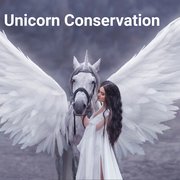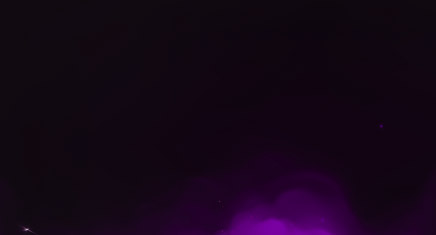Are Unicorns Real?
For thousands of years, people around the world have spoken of an ethereal and wild mystical creature with a single, spiraling horn coming from its forehead. These mythical creatures were said to be endowed with powerful healingenergy, and could only be tamed by a lovely maiden, but are they real? You will be pleasantly surprised to learn the magic of unicorns exists, and they have been around for thousands of years. The truth about unicorns will amaze you, and the most wonderful thing is, you have probably already seen a unicorn!
What Are Unicorns?
Unicorns are believed to be wild creatures whose bodies are like those of horses or goats, and besides having their single horn, they are often depicted as having flowing manes, and cloven hooves. Their horns are said to hold the antidote for all poisons, and their blood and tears are said to contain healing properties. They have often been portrayed as being all white and very graceful. Unicorns don’t like to be caught, but are said to approach a damsel and lay their heads in her lap. Unicorns symbolize magic, the ability to heal, freedom, fertility, passion, untamed nature, and breaking free from bondage.
The History of Unicorns
The Greeks were the earliest people to write about unicorns. The first known writings about them come from Ctesias, a Greek physician and author who lived and worked in the 5th century BCE. He wrote that unicorns lived in India and were “wild asses'' whose meat tasted bitter. He wrote they were red, white, and black colors, and were fast. They also had a horn a cubit and a half long in the center of their foreheads. Aristotle wrote about them, as did Strabo, who wrote there were one horned horses with stag-like heads that lived in the Caucasus.
Marco Polo described them as not much smaller than elephants, with the feet of elephants and hair like a buffalo. He said they had one single black horn growing from their forehead, and they were ugly. Marco Polo also noted these creatures were wallowing in slime, and were not like what literature described.
Cosmas Indicopleustes, a 6th century Alexandrian theologian, writer, and geographer described unicorns as creatures who resisted capture by leaping off precipices, and they landed on their powerful horns safely to escape.
Multiple Biblical passages in The King James Version are believed to speak of the unicorn, although some people believe the scriptures may have been speaking of other creatures. Numbers 23:22, for example, says, “God brought them out of Egypt; he hath, as it were, the strength of a unicorn.” Psalm 22:21 says “Save me from the lion’s mouth: for thou hast heard me from the horns of unicorns.” Deuteronomy 33:17 says, “His glory is like the firstling of his bullock and his horns are like the horns of unicorns…” In the Bible, unicorns are depicted as powerful creatures of strength and ferocity and were believed to be real creatures.
In Europe in the Middle Ages, unicorns became associated with such virtues as beauty, grace, royalty, and Jesus Christ. The unicorn was believed to be a powerful creature only a virgin could capture, and Mary, the mother of Christ, was associated with the virgin who brought Jesus to humanity. A myth was told about the Virgin Mary, who brought the unicorn, or Jesus, to hunters, for the crucifixion. The unicorn’s horn was also associated with purity, like Christ, and its horn was said to not only be the antidote for poisons, but to also purify water The horn was associated with divine intervention, and the horn was thought of as a ray of divine light striking the forehead.
Today, unicorns are celebrated in fiction and films as beautiful, magical creatures who appear to the few chosen people who are gentlehearted enough to be worthy of their presence. Few in modern society believe unicorns exist, and even fewer people believe that magic is real at all. Despite what some people believe, unicorns are real, and they have been among us for at least 2 million years. They just don’t look the way we expect them to.
Where Do Unicorns Live?
Prehistory
Millions of years ago, unicorns roamed the earth, but they were not as graceful looking as the ones depicted in classical art, and they were not called unicorns. Four different species of single horned Elasmotherium lived in places like Southwestern Russia, Western Siberia, Moldova, parts of China, the Black Sea region, and Ukraine. These were semiaquatic, wholly animals, with three toes and were rhinoceros creatures. Some of them weighed as much as 5.5 tons, and some of them were still alive 36,000 years ago. Since modern humans appeared close to 200,000 years ago, unicorn legends might be based on sightings of these creatures.
Africa and Asia
Today, there are five species of rhinoceros worldwide, with two being in Africa, and three species in Asia. They may be similar to the ancient Elasmotherium, but most rhinos have two horns instead of one. Like unicorns, their bodies are believed to have magic healing properties, and as a result of poaching, they are endangered. The Javan rhinoceros has one horn instead of two, which grows from the top of its nose instead of its forehead, and there may be only 100 of them remaining in the wild today.
The Sea
A real modern-day unicorn lives in the sea and is called the narwhal. They live in mostly the Russian parts of the Arctic Ocean and the Atlantic Ocean. They have a long tooth, or tusk that protrudes from their mouths, but that looks like a horn coming from their foreheads. False unicorn horn, taken from the tusk of the narwhal is referred to as alicorn. Alicorn was promoted as having all the healing properties unicorns and their horns were said to have, and carved cups made of alicorn were gifted to kings centuries ago. The ivory from walrus tusks and elephant tusks was also used for this.
The Living Unicorn Project
The most famous unicorn sightings in modern times were made possible by a man named Oberon Zell-Ravenheart and his wife, Morning Glory Zell-Ravenheart. He read the famous book The Last Unicorn and was inspired to create his own unicorns. Their first two unicorns were born in the Spring of 1980. The Zell’s called their creations The Living Unicorn’s Project The Living Unicorns Project – A Rare Adventure, and the creatures toured with Ringling Bros. and Barnum and Bailey Circus. The last of these beautiful creatures grew old and died over 20 years ago, but not before they brought their magic How to Include Everyday Magic In Your Life to the world.
Unicorn Conservation

People assumed unicorns were strange creatures that you rarely saw and who required an especially gentle person to catch them. Unicorns are creatures of many different species who have their own names, many of which human beings have hunted, some to the point of extinction. They can use our help.
The narwhal lives in cold waters, and the rise in temperature of the ocean is dangerous for them. Microplastics human beings use pollute the waters they live in as well. Switching to renewable energy sources will cut your carbon footprint, and refusing to buy plastic products can help keep the narwhal’s habitat cleaner.
Rhinos are not as fortunate as narwhals and are endangered. They are at risk of being killed by poachers and their horn is used to make hangover cures, party drugs, and is believed to be a health supplement and supposedly cures cancer although no evidence supports this claim. To help rhinos, you can contribute to the World Wildlife Federation here: Rhino | Species | WWF (worldwildlife.org)
Unicorns & Psychics
Maybe you saw a rhinoceros and did not think anything of it, but that creature is a living example of the magic of the unicorn. The narwhal, also, called “The Unicorn of the Sea” is another living unicorn. Maybe you were lucky enough to see the unicorns of The Living Unicorn Project before they passed away and you experienced their special magic. The unicorn represents many things from healing and magic to the unbridled freedom animals who have never been taken into captivity enjoy.
Real unicorns won’t instantly heal you if they touch you with their horn or give you their tears to rejuvenate you, but they shed real tears because they are in danger and they need healing and protection from human beings. You can share in the magic they have embodied for centuries by being a part of the magic of healing they need.
About the Author: Lady Saoirse has studied magic and lore for most of her life but started walking her own Magical Path after being spiritually reborn in the desert. Today she is a High Priestess for The Temple of the Goddess, she is a psychic advisor and spiritual counselor, she shares her gifts as a Psychic and Content Writer for SpiritualBlossom, and she writes for The Green Egg. She has written for Mysticsense and PaganPagesOrg emag.









